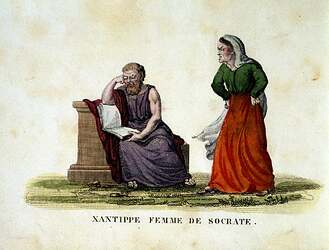Okay, so I’ve been playing some IFComp games here and there as they strike my fancy. I’m unlikely to play them all this year, and I doubt I’ll have time to write very in-depth reviews, but I’m going to record my ~fleeting impressions~ in this thread.
I’ll probably spoil things recklessly, so I’ll hide everything. Consider this a general warning for spoilers, spoilers everywhere! Or maybe no spoilers at all, since my comments will follow no format and I’ll likely end up talking about all sorts of random stuff from each of the games. Maybe purely talking about story. Maybe purely about mechanics. Just depends on what I have the most to talk about!
Tricks of light in the forest by Pseudavid
Summary
An interesting exploration piece. More about mood than anything, I’d say. I feel like I’ve come across games in this style before, though I struggle to pinpoint the genre, if there is indeed even a solid genre to pinpoint. But maybe something like “casual bizarro” or “mundane weird” would do the trick. Initially, the setting feels very normal, the stakes low, the energy relaxed; and that’s also how it feels by the end. But somewhere in the middle, things get slightly off-kilter, just slightly, forcing you to slowly reevaluate what’s happening.
The changing background colors are a cool visual signal. The map that occasionally pops up was a cool idea, but the execution didn’t quite work for me. I always had to take a moment to pause and try to figure out where I was supposed to be on the map, and sometimes I couldn’t figure it out fast enough and just wanted to close the map and move on with the game.
Light puzzles. Easy to figure out. Just enough friction to keep it from being a full-blown walking simulator. Not that I have anything against walking simulators! They can be awesome. But this game would literally be a walk through the woods without the puzzly obstacles you sometimes encounter. I liked having the texture of the puzzles to break up the pace, add a little grit to the game. The good kind of grit.
Parser/choice hybrid interface ala Detectiveland, which is always interesting to see. In some cases, this interface streamlined the gameplay. In other cases, having all the available options always visible made it feel, hmm, how to put it, almost like a checklist? By the time I was over the halfway mark, each time I encountered a new scene and the same photograph/touch/smell/collect/etc buttons popped up, it felt like it had become a routine obligation to click them, since the sense of discovery had worn off by that point.
On the flip side, the “routine” of clicking these options over and over also became, ultimately, bizarre in its own way. Like when I found myself in an abandoned cabin in the forest, faced with a chair outfitted with leather straps, and I was given the same standard options: one of which included the option to “smell” the straps. The normalcy of this, the “it’s just what we’re doing here” attitude, the unremarked-upon nature of it, made it feel quite unusual! Is this chair a piece of torture equipment? And I’m playing a child, alone in the woods, who’s sniffing the leather straps?? Nothing comes of it. It’s just an atmospheric detail. But these odd little touches are all over the place, and they accumulate and contribute to the sense of subtle weirdness that infuses the whole game.
So this isn’t what I would call a perfectly implemented piece. It does have some rough spots and bumps. But it’s striking in unexpected ways, and in unexpected places. It’ll catch you off-guard and then… drift onward like nothing happened. Which feels 100% calculated to produce the overall mood of the story. A strange snapshot of a strange world, which might not actually be so strange, after all.
The Sculptor by Yakoub Mousli & We All Fall Together by Camron Gonzalez
Summary
These two games have nothing to do with each other, but they’re both short, both written with Texture, and I played them both back-to-back, so they have become fused within my brain!
They’re also both kind of uneven, prose-wise. Various typos and idiosyncratic formatting choices. The formatting weirdness is partially due to Texture itself: how it spawns new text mid-page as you drag and drop the buttons, and how the buttons themselves are words that you’re inserting into the preexisting sentences, building new phrases which then unfold into full paragraphs. This grammatical jankiness is the very thing that makes Texture appealing, but I’m not sure these two games really capitalized on it. I found myself asking, at multiple points, couldn’t these games just be programmed with Twine? What are the pieces gaining from the drag/drop mechanic, the word-insertion mechanic, the verb+noun layering that the buttons naturally prompt the player to consider?
Texture fascinates me as an authoring tool. I’ve played around with it and made some games myself. But it really is SO weird, and most Texture games don’t seem to exploit the inherent weirdness of the mechanics. I always want some new twist on the drag/drop feature. Some reason in the narrative to account for why we’re unfolding sentences and piling verbs onto nouns.
With The Sculptor, at least, there is a subtle sense that you’re molding the text as a sculptor might mold solid material to make a sculpture. The peculiar formatting adds to this. There’s a bit of a textual landscape, which becomes textural. Words as crags. Texture, indeed. But I’m not sure if this was intentional or inadvertent. It could’ve been pushed further for my tastes, in any case.
We All Fall Together has a slightly similar thing going on, in that the shape of the text vaguely echoes the narrative. Free-falling through an endless sky. Words scattered around on the screen. Picking up the buttons, having them float above the paragraphs before you drop them, etc. But again, not sure if it was intentional. If it was, I wish the effect had been dialed up more.
To Sea in a Sieve by J. J. Guest
Summary
I loved this game. Same general concept as To Hell in a Hamper, which I also enjoyed enormously, but the nautical theme here appeals to me more, just on a personal level because I like nautical-themed fiction, and I think the writing in Sieve is stronger than Hamper. They’re both funny, but I laughed more during Sieve, even though Hamper probably has a larger serving of absurdity in terms of puzzle design.
Alas, I did struggle with guess-the-verb issues. I figured out everything all by myself, and felt very clever, up until I had to light the fuse to explode the barrel. I KNEW this was what I had to do, but I kept trying all sorts of commands like “shine mirror through glass onto fuse” or “light fuse with mirror and glass” or yadda yadda. Tons of 'em. Before finally resorting to the walkthrough – which didn’t help! It simply confirmed that my idea was correct, but I still had to thrash around before realizing that “focus” was the actual verb I was supposed to use.
Then, onward! Everything’s going smoothly again. I’ve got the snuffbox. I know I have to fill it with pepper to disarm Captain Booby. But Booby has the pepper. Much flailing ensued as I tried to get the sack of pepper back, until finally I tried to just fill the snuffbox with pepper while Booby was still holding the sack… and it worked. Did not expect that to work. Earlier in the game, it was part of the comedy for Booby to take items, and then for me to just take them back effortlessly, since he’s powerless without his pistol. But being able to use the sack of pepper WHILE Booby is holding it WHILE he is threatening me with the cutlass, well, that just didn’t make much sense to me. But still, I figured it out.
Onward! I’ve got the sea-chest open. I want to dump the coins. How?? More flailing! At last, I turn to the walkthrough again. Second time using the walkthrough. The solution, when it’s presented to me explicitly, is narratively satisfying. We started this game by bailing water with the bucket; we end it by bailing coins. Very nice bookends, there. But I wish the game had pointed me in this direction more clearly. Maybe it already does! Maybe there are hints that I missed, which told me to use the bucket. In which case, I wish those hints had clobbered me over the head! Because it kind of sucked the tension out of the game at the very last minute, having to turn to the walkthrough during this scene.
After bailing the coins, I struggled again with the oars and barrel. Whatever the arrangement of the objects was there, I wasn’t picturing it correctly in my head, and I would’ve never thought to push a floating barrel in order to, not move the barrel, but move the boat. So I once more had to use the walkthrough, and the game ended on a bit of a whimper as a result.
Now, all I’ve been doing here is listing the spots where I struggled with the puzzles. I could talk about some implementation holes, too, such as Captain Booby’s “hair” and “eyes” which apparently don’t exist despite taking up a sizable chunk of the “X Booby” description with their “sodden tresses” and “gimlet” gaze so forth. This is why I prefaced my rambling with “I loved this game,” because THAT is the bottom line! And that’s the main message to take away. My quibbles are, indeed, quibbles, and might represent spots to improve in a post-comp release, but the overall bones the game, its spirit, my experience as I played it: these were all delightful.
I don’t intend to post my scores for most of the games I talk about, but To Sea in a Sieve will be an exception, purely to underscore the frivolity of my own criticisms. This one got a 9 from me, and I’m tempted to give it a 10, which I may very well end up doing upon further reflection. It brought real joy into my life, and that counts for a lot!

